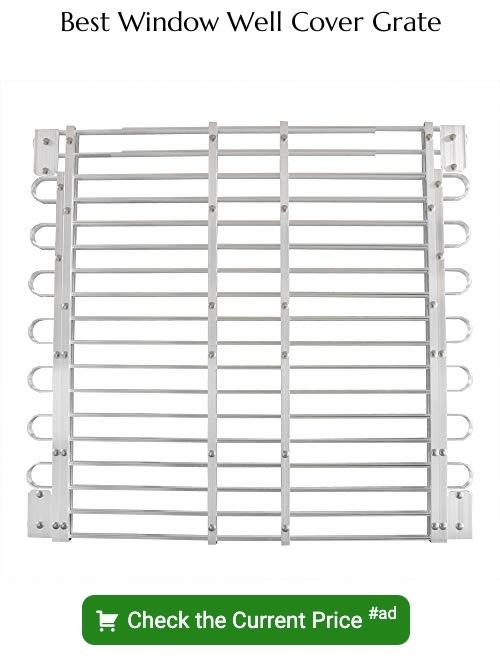Explore the world of window well grates, their functionality, types and benefits in enhancing your home’s safety and aesthetics.
Window well grates are an essential feature for any home with a basement, serving both functional and aesthetic purposes. These grates are designed to keep debris, rain, snow, and even unwanted visitors, such as rodents, from entering your home through the basement windows. They also allow natural light and ventilation into your basement, making it a more pleasant and usable space.
In this article, you’ll find everything you need to know about window well grates, from the different types and materials available, to the factors you need to consider when choosing the right grate for your home, and even how to install them. Stay tuned for a comprehensive guide on window well grates.
Key takeaways:
- Types: Flat grates vs domed grates, metal vs aluminum, standard vs custom
- Importance of size for functionality and fit
- Benefits of custom fit grates and key considerations
- Material differences: tempered aluminum vs metal grates
- Role of window well grates in creating easy exits
Types of Window Well Grates
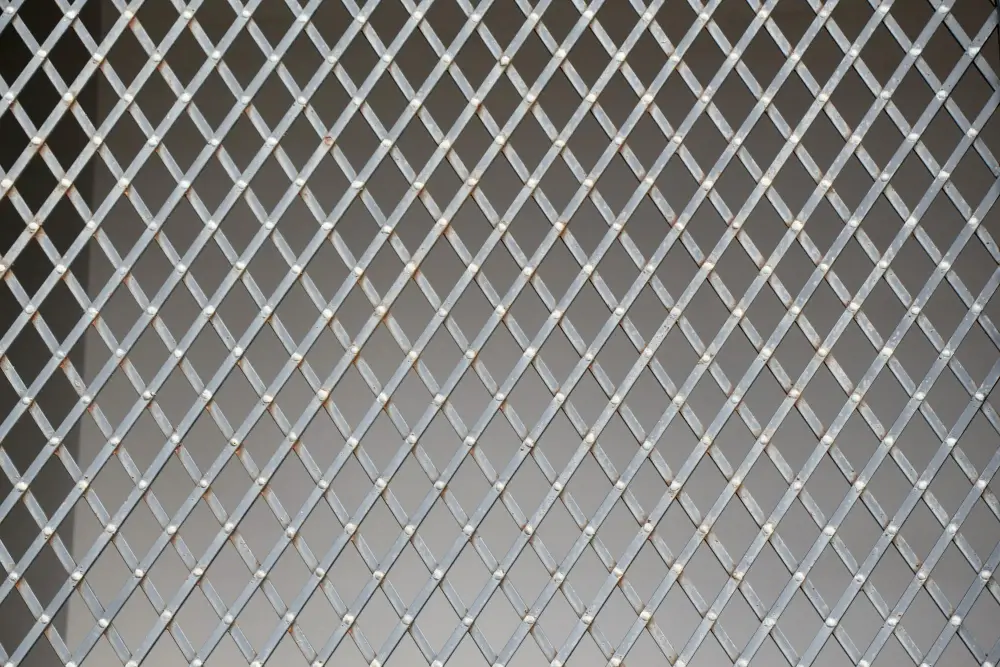
Window well grates can be classified according to their form; there are flat grates and domed grates. Flat grates lie leveled with the top of the window well giving a tidy appearance, whereas domed grates rise above the window well and allow extra room for window movement beneath.
They can also be categorized based on the material they’re crafted from. While metal grates such as iron or steel are sturdy, they can rust if not properly maintained. Alternatively, tempered aluminum grates are lightweight, rust-free, and equally strong.
Another classification can be drawn from their customization. Standard sized grates are readily available ensuring a quick installation, but they may not perfectly fit all window wells. On the other hand, custom fit grates are designed to the exact size and shape of the window well ensuring a sleek fit, but may take a bit longer to deliver and install.
Each type of window well grate offers a unique set of advantages and should be selected based on the particular requirements of your window wells. Always consider factors such as window size, functionality, the local climate, and the architectural style of your home before making a choice.
Importance of Different Sizes in Window Well Grates
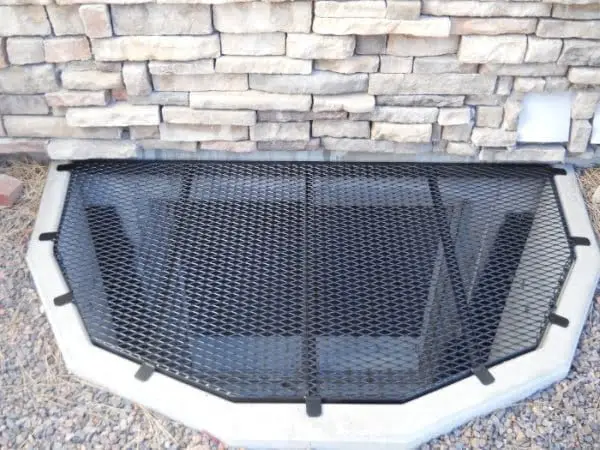
Size significantly influences the functionality and efficiency of window well grates. Here, the task is to ensure an exact fit with the window well, ensuring optimal protection and ease of use.
Different window well sizes need varying grates to cover the opening. For small-sized window wells, buying or custom-making a smaller grate is necessary. A grate that’s too big or too small will not cover the window well area effectively, thus compromising safety.
Moreover, a larger window well grate can withstand more weight, essential for areas experiencing heavy snowfall or frequent visitors. A strong fit also provides efficient ventilation and prevents unwanted animals and debris from entering your house.
In case none of the standard sizes fit your window well, consider a custom-sized grate. This ensures a perfect fit, essential for maximizing the benefits of having a grate.
To choose the right size, you should measure the window well width, length, and depth. It is crucial to be precise to ensure the grate fits your window well securely and provides the necessary protection.
Lastly, one must account for grates with hinges or other opening mechanisms. The design and functionality affect the size and overall compatibility with a specific window well type.
Remember, accurate measurements and understanding of your particular needs are essential when deciding on the size of your window well grate.
Custom Fit Window Well Grates
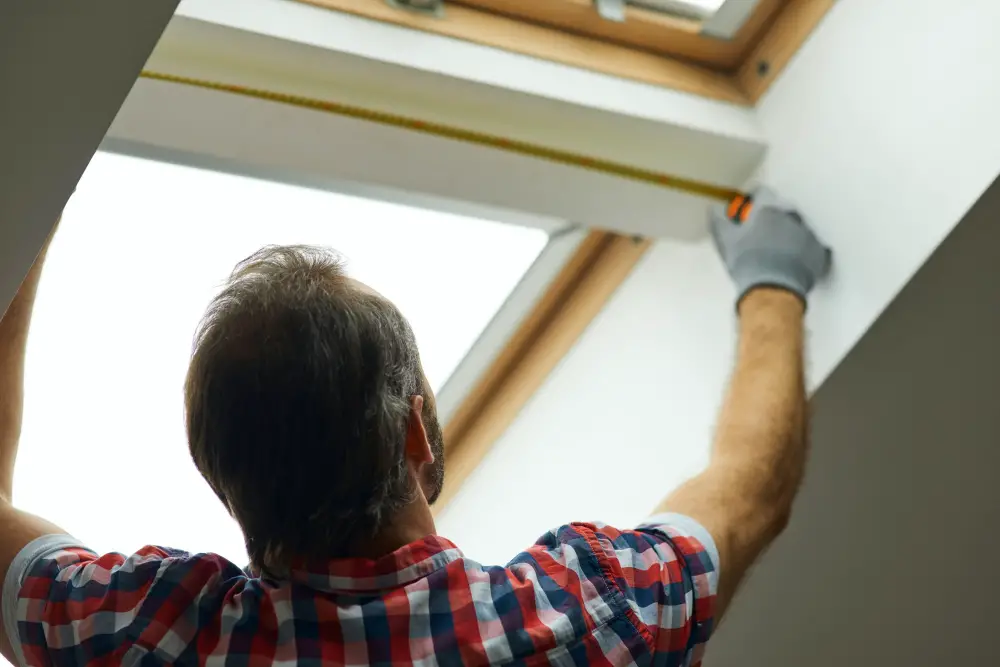
Custom fit window well grates offer optimal coverage as they perfectly match the window well dimensions. Precise measurements prove crucial in ensuring that the grates fit properly and serve their purpose.
Here are the key points to consider:
- Measurement accuracy is vital. Always measure the length, width, and depth of your window well, including any curves or corners.
- Consider professional assistance. Some suppliers may offer services to help with measurements or even perform the installation.
- When ordering online, double-check all entered measurements, as mistakes can lead to improperly fitting grates.
- Select a model that can be adjusted in size if necessary. Some grates allow small adjustments, offering a bit of leeway in fit.
- Keep in mind that customized products often take longer to deliver, due to the time required for manufacturing to exact specifications.
Custom fit window well grates, while requiring a bit more effort upfront in measurements and waiting time, are an attractive, effective means of protecting your window wells, enhancing safety, and adding an aesthetic touch to your home’s exterior.
Material Differences: Tempered Aluminum Vs Metal Window Well Grates

Tempered aluminum, often preferred for its lightweight yet strong build, retains excellent performance under a variety of weather conditions. It’s resistant to rust and corrosion, making it ideal for a long-lasting and minimal-maintenance option. However, this material’s cost might be higher than other types of window well grates.
On the other hand, metal grates, frequently made from steel, offer superior durability and strength, making them ideal for areas with heavy rainfall or snowfall. These grates are typically more affordable, but they may require regular maintenance to prevent rust and corrosion, depending on the type and grade of metal used.
Whether your preference leans towards tempered aluminum or metal grates, understanding your geographic location’s weather patterns can guide you towards an optimal choice. Those living in harsher climates may prefer the robustness of metal, whereas homeowners in milder regions might find tempered aluminum grates meet their needs best.
Consider seeking expert advice before settling on a material for your window well grates. Professionals can give a more detailed analysis of your home’s specific requirements, helping you make an informed decision.
Pros and Cons of Concrete Foundation for Window Well Grates
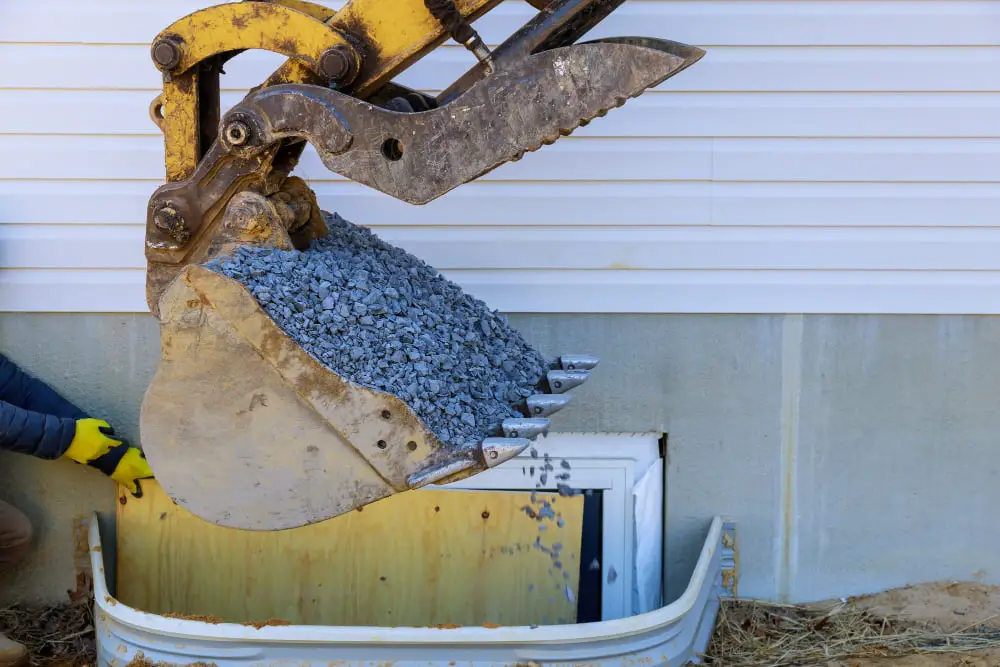
Adopting a concrete foundation for your window well grates comes with a unique set of implications.
One key advantage is increased durability. Concrete foundations are built to last, and can withstand extreme weather conditions. This strength ensures a longer lifespan for your grates.
Another plus is a high level of security. Concrete is a sturdy material, which acts as a robust deterrent against potential break-ins through the well.
Concrete foundations also provide remarkable stability. The window well grates are more firmly anchored which helps them securely hold lots of weight even during heavy snowfall.
On the downside, concrete foundations can make future adjustments a bit tricky. The rigid nature of concrete can make it a challenge to redesign or alter the structure of your well.
Another downside is the financial commitment. This type of foundation comes with a higher upfront cost as compared to other materials, so initial budget consideration is crucial.
Additionally, the installation process can be quite complex requiring professional expertise, therefore extra preparation and planning is necessary.
In terms of aesthetics, some homeowners might find the look of concrete foundations less appealing than, say, stone or brick options. This aesthetic factor can impact your home’s exterior look.
Maintenance is also a key consideration as concrete can have porous characteristics and could require sealing or special upkeep in order to prevent potential water damage.
Benefits of Adjustable Aluminum Window Grates
Adjustable aluminum window grates come with a set of notable advantages rooted in their design and material.
Aluminum as a metal is rust-resistant, ensuring longevity. This property means less worry over seasonal changes and their impact on the grates.
Their adjustable nature offers a fit for various window sizes and shapes, making them a versatile choice. This design eliminates the need for a custom made grate, potentially saving time and money.
Offering a lightweight yet strong solution, these grates allow for simpler installation and removal if necessary. The weight does not compromise the ability to withstand heavy loads, offering safety and protection first hand.
Furthermore, aluminum window grates reflect sunlight, preventing overheating during warmer months. This characteristic improves overall temperature regulation within the house.
To maximize these benefits, ensure you properly measure your window well before purchase, and check for an adjustable feature. Opt for high-quality options to ensure durability and strength. Regular cleaning and maintenance will help in preserving its condition and functionality.
The Role of Window Well Grates in Creating Easy Exits
An essential function window well grates serve is establishing a safe, convenient exit route. Primarily, it helps in case of emergencies, allowing a swift egress from the basement levels of a building. But beyond emergency situations, it also gives a more practical everyday accessibility.
Especially large grates provide ample room for an adult to climb through, making these an optimal choice for those concerned with safety. Similarly, the presence of security locks on some grates can deter unwanted visitors while still offering exit capability. It’s key to look for grates that have both indoor and outdoor unlocking abilities for maximum flexibility.
Additionally, a well-devised hinged system makes it easy to open and close the grate from inside. In certain designs, quick-release mechanisms ensure that even a child can evacuate rapidly if needed. In terms of installation, many grates are designed for straightforward DIY fitting, reducing the need for professional help.
Ultimately, when choosing a grate that creates an easy exit, keep in mind dimensions, lock features, opening mechanisms, and installation simplicity.
Understanding Different Shapes: Half Moon Window Well Grates
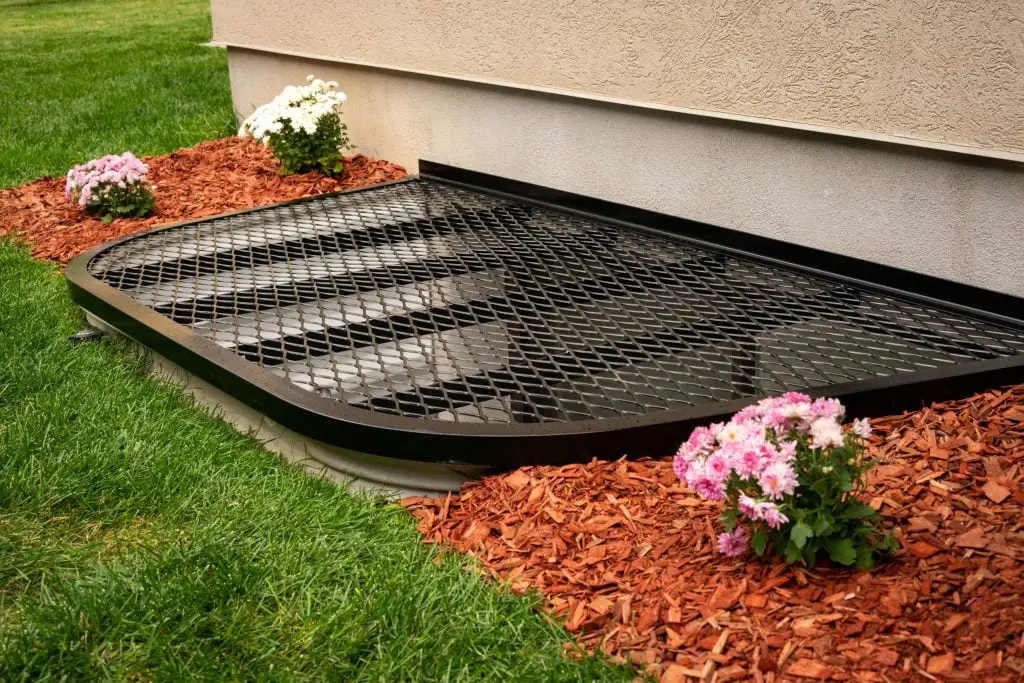
Half moon window well grates, named after their distinctive semi-circular shape, cater specifically to basements with round windows or unconventional architectural designs.
Their design is all about maximizing light. If your window is round, installing a half moon grate ensures you get the most sunlight by mirroring the window’s shape.
Due to their specific shape, these grates are often customizable to ensure a perfect fit, proving advantageous to homeowners with unique basement designs. This allows the essential benefits of window well grates – preventing debris build-up, facilitating emergency exits, and aiding in ventilation – to be maintained, regardless of the unusual shape.
While available in different materials, key attention should be given to their dimension and fit. Inaccurately sized grates, even in this specialized shape, can lead to debris accumulation, drainage problems, and compromised safety features.
For installation, it usually requires no more than placing the grate over the window well and ensuring a snug fit. Professional installation is recommended for absolute precision and secure settings. Regular maintenance, such as cleaning and checking for signs of wear, also applies to these grates to ensure longevity.
Despite limited variety in terms of prefabricated models, bespoke options provide the freedom to adapt the grate’s design to the home’s aesthetic, marrying function and beauty.
In conclusion, while half moon window well grates may be a necessity for some homeowners due to their distinctive basement windows, they also serve as a solution for those seeking a unique appearance with unwavering functionality.
Comparing Various Models: Cover for Elite Egress Well Vs Grate for Stif Back II
The Cover for Elite Egress Well stands out due to its specific design focused on energy-efficiency. With an added insulation factor, it helps reduce heat loss during colder months. Moreover, it exhibits considerable strength, a result of its expert-engineered structure, which comes handy in withstanding heavy loads like snowfall.
On the contrary, the Grate for Stif Back II finds its strength in utility. Primarily, it serves to prevent accidental falls into the well, thanks to its strong, durable design. Interestingly, despite its solid structure, it doesn’t hamper the entrance of natural light, maintaining interior brightness.
Consider the following key factors while deciding between the two:
- Your region’s climate: For colder climates, Elite Egress Well covers with their superior insulation could offer added benefits.
- Safety requirements: If safety tops your priority, Grate for Stif Back II serves the purpose with its sturdy design.
- Need for natural light: With the Grate for Stif Back II, there’s no compromise on the brightness of your interior spaces.
Remember, both models have unique strengths catering to different needs, thus recognizing your individual requirements is crucial before making the selection.
Explaining Thermal Hinged Cover for Quarry View
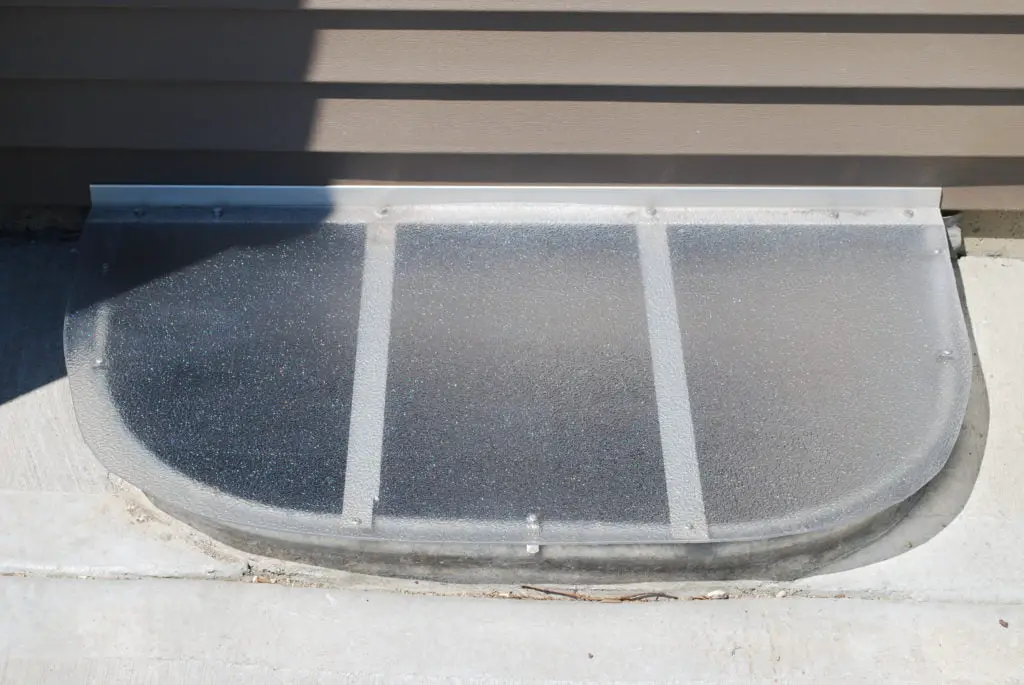
The Thermal Hinged Cover for Quarry View stands out for its ingenious design and the multifunctional benefits it provides.
Equipped with thermal insulation, this type of cover is structured to reduce heat loss, making it an energy-efficient choice. It ensures the temperature in your basement remains stable, preventing the overuse of heating systems during colder months.
With a hinged feature, it delivers easy access and exit points in various situations, not limited to emergencies. This allows for convenient regular maintenance checks and easy cleaning routines without struggling to remove the entire cover.
The cover is skillfully tailored for Quarry View window wells, guaranteeing a perfect fit, reducing chances of improper installment or gaps which could let in debris or excess water.
It is made durable and strong, bearing a substantial weight. An adult can safely walk or even stand on it without risking damage.
Highly conducive to regions with fluctuating weather, it is built to resist fluctuations of extreme heat and cold, making it versatile and trustworthy. The thermal insulation not only retains heat but also protects against cold air seeping in.
Caring for the cover requires minimal effort. An occasional wipe with a soft cloth or light pressure wash can keep it looking fresh and performing optimally.
Take a look at the measurements of your Quarry View well before purchasing. The cover should snugly fit the window well, for it to function effectively.
Essential Features of Weather-Resistant Window Well Grates
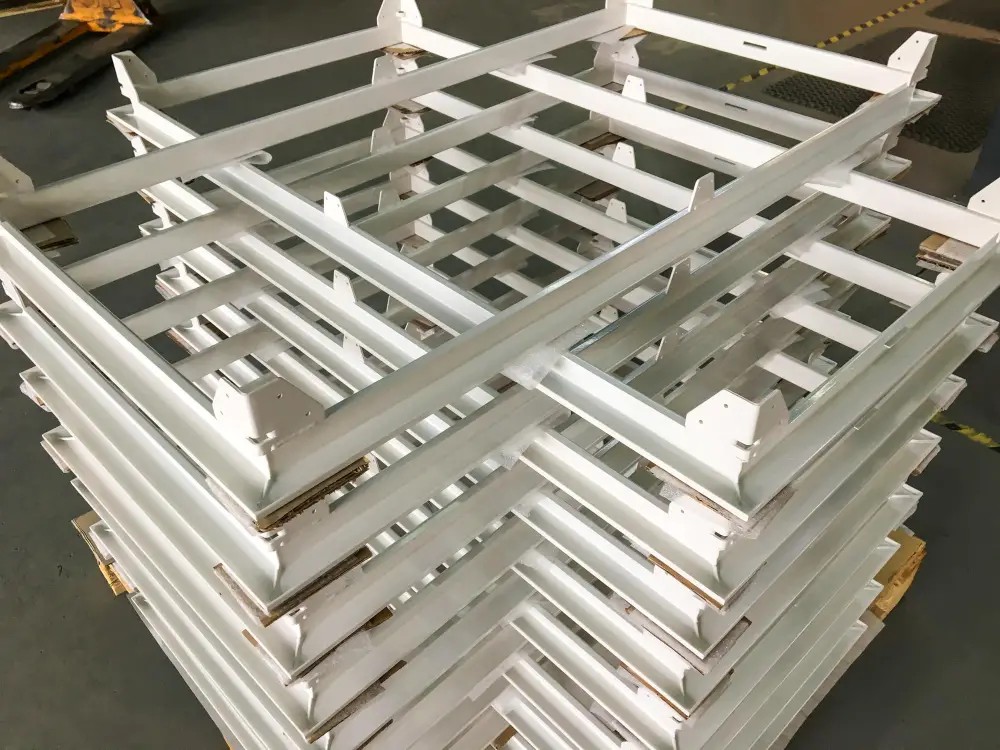
Weather-resistant window well grates are designed to withstand varying weather conditions. Four essential features make them particularly durable and effective.
Material is a primary consideration. High-quality grates often use aluminum, offering superior rust resistance and longevity. This metal does not corrode in the rain or degrade in intense sunlight.
The treatment of the material adds further protection. Powder coating, a popular treatment, provides an additional layer of weather resistance and prevents flaking, chipping, or discoloration.
The design itself also plays into weather-resistant features. Some grates have slats or mesh designs which allow rainwater to flow through, reducing puddle formation and the risk of flooding.
Finally, secure fixation is crucial. Weather-resistant grates usually come with solid attachment mechanisms that keep them in place, even during serious storms. These mechanisms can include screws, clips, and bolts among others.
To choose the best weather-resistant window well grate, consider all these features and match them with your specific need and the prevailing weather conditions in your location.
Caring for and Maintaining Your Window Well Grates
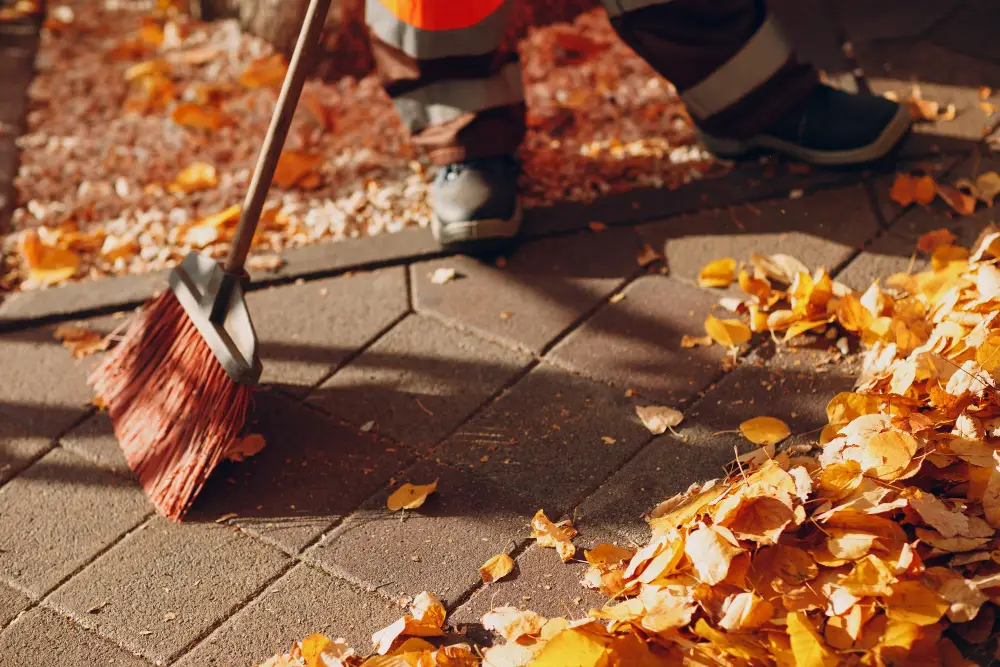
Regular cleaning helps prolong the life of your grates. First, remove debris like leaves, dust, and small critters that may have accumulated over time. Use a broom or leaf blower for this task.
In cases of stubborn dirt or stains, a mild solution of detergent and warm water will do the trick. Apply this soapy mixture using a soft bristle brush to avoid scratching. Rinse thoroughly, ensuring no soap residue remains, as this can dull the surface of the grate over time.
Inspect regularly for signs of wear or damage such as cracks or rust spots. If you notice such issues, address them promptly to prevent worsening. This could include sanding down rust from metal grates or applying a fresh layer of paint or sealant.
Consider professional maintenance or replacement if the grate reaches a certain age or condition. Some signs that it may be time for a new one include persistent rust despite diligent care, warping or sagging, or if it no longer fits properly.
Lastly, think about investing in a high-quality cover for additional protection. This shields the grates from harsh weather, thus minimizing damage and the need for future repairs.
Choosing the Right Window Well Grate for Your Home
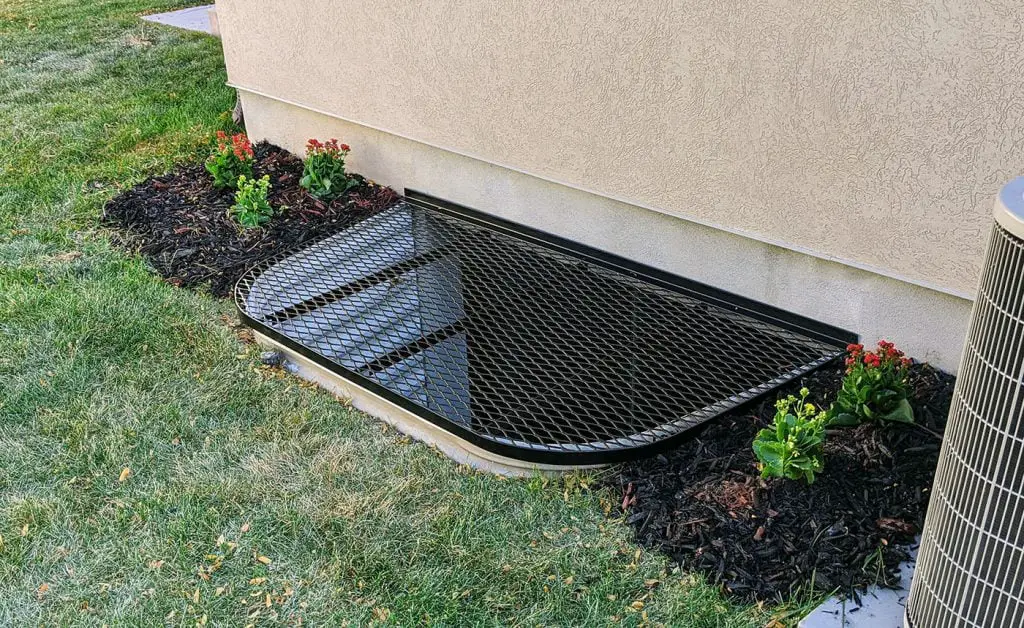
Consider these crucial factors when deciding on the best window well grate for your home.
First and foremost, determine the size and shape of your window well. It could be round, square, or rectangular, and each requires a particular grate design.
Material is another essential aspect. Tempered aluminum, steel, and polycarbonate are common options, each offering different strength, aesthetic, and cost parameters.
Durability is key. Invest in a grate with a rust-resistant coating or one made from materials that can withstand the elements.
Remember to think about the grate’s weight load capacity. For homes with children or pets, a grate that can hold substantial weight, without being too heavy to lift in emergencies, is imperative.
Discuss your needs with professionals. They can offer invaluable advice based on their industry experience, guiding you to a grate that meets your specific needs and budget.
Lastly, look for window well grates with additional features such as a hinged design to facilitate a quick escape, or a lock for added security from potential intruders.
Keeping these factors in mind will help guide you towards the right window well grate that not only safeguards your home but also blends seamlessly with your exterior aesthetics.
FAQ
What is a window well grate?
A window well grate is a protective covering for basement egress systems, designed to prevent people and pets from falling into open wells, while protecting from weather and preventing debris accumulation.
What do you put in the bottom of a window well?
The bottom of a window well should be filled with a few inches of gravel to facilitate slow infiltration of rainwater into the drainage system, thereby preventing pooling around the house’s foundation.
How do you replace gravel in a window well?
To replace gravel in a window well, you can simply remove the old gravel, wash it until clean, and then shovel it back into the window well, or alternatively, replace it with new gravel.
What materials work best for window well grates?
Durable materials like aluminum, steel, and polycarbonate are ideal for window well grates due to their strength and ability to withstand harsh weather conditions.
How often should you clean your window well?
You should clean your window well at least twice a year, ideally in the spring and fall, to prevent debris accumulation and water damage.
Can window well grates help in preventing pest invasion?
Yes, window well grates can effectively prevent pest invasion by acting as a physical barrier to entry.
Recap
